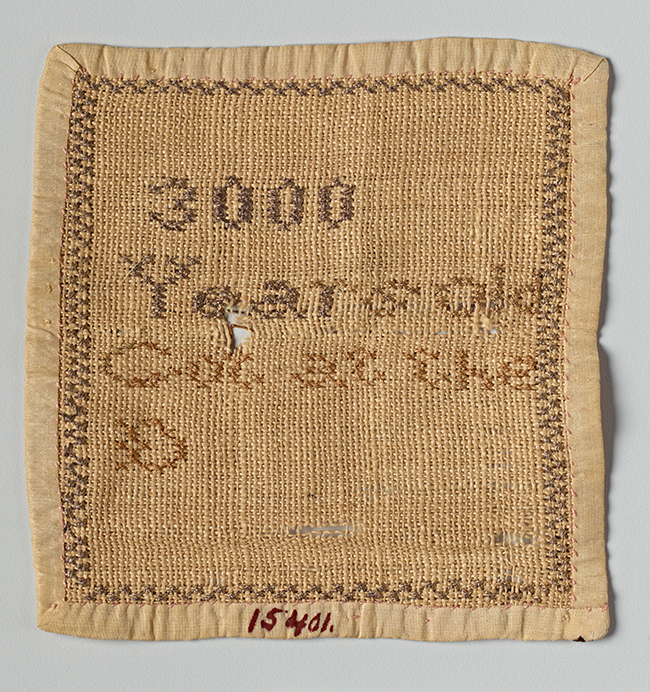Cantor Arts Center
328 Lomita Drive at Museum Way
Stanford, CA 94305-5060
Phone: 650-723-4177

Artist unknown (Egypt?), Cloth Fragment, n.d. Fiber and thread. Stanford Family Collections, JLS.15401
The Latin word fabrico (to make, build, fashion) is the ancestor of words like “fabric” and “fabrication,” the latter of which came to mean “forgery” by 1790. This piece of “Egyptian” fabric, which Leland Stanford Jr. purchased in the early 1880s, brings all of these meanings together.
Though its embroidered text implies that the cloth was cut from the heart of an ancient Egyptian mummy, there are good reasons to doubt this claim: the text is in English; the woven ground betrays the same freshness and brilliance as the embroidered text and borders; and it resembles nineteenth-century “samplers” with their rectangular shape, embroidered text, and symbols.
We also see none of the characteristic stains and discolorations that typically occurred as embalming resins and bodily fluids oozed into burial fabric and hardened as the corpse aged in the tomb. We must conclude, then, that this humble cloth’s fantastic story has been fabricated. One wonders: Can a fake antiquity qualify as a genuine piece of textile art from the Victorian era?